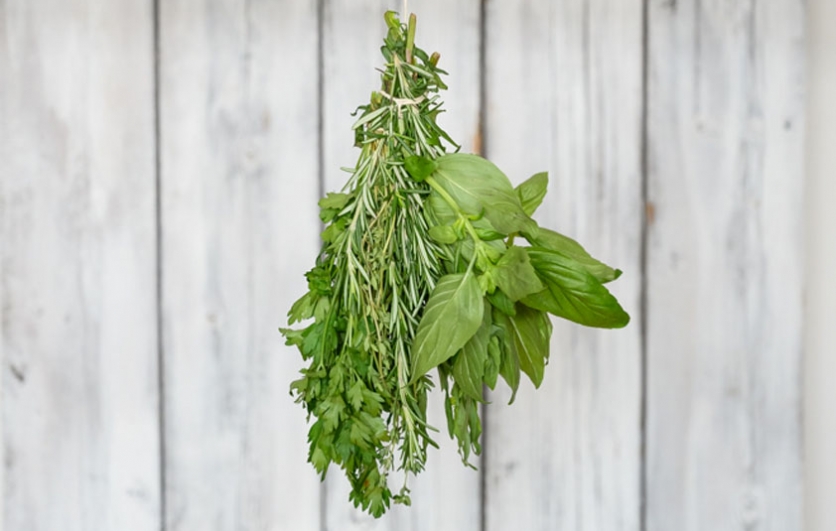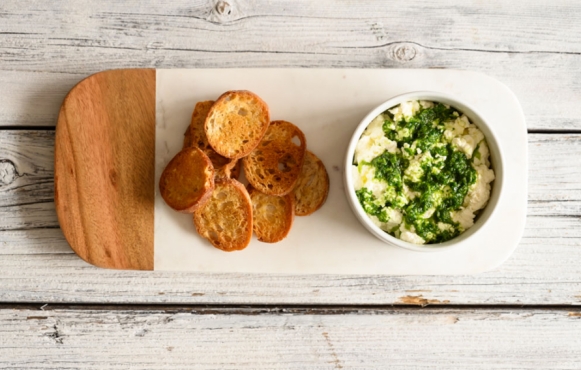Eat Your Herbs and Whey

It all starts with making fresh ricotta. Just don't throw out the whey.
We've all heard of Miss Muffet sitting down to tuck into a big ole bowl of curds and whey and likely wondered "who eats that?" — and after Googling the meaning of tuffet, wondered "does anyone even use one anymore?" Well, these recipes not only separate the curds from the whey, they re-imagine them. They combine them in different ways to make simple but inspired dishes — adding fresh herbs to the creamy curds for contrasting bright grassy flavours, fermenting the whey, making a sauce from whey and using it to glaze root vegetables. Hopefully, these recipes will make you forget about poor Miss Muffet eating straightup curds and whey (not to mention a chance of spiders) and provide a good use for whey — the sad, usually discarded, byproduct of cheesemaking.
Cheesemaking in its simplest form predates recorded history. Any human who used an animal stomach bladder to carry milk, especially over some distance in the heat, most likely and unknowingly, made a simple form of cheese, similar to the ricotta recipe below. Such a delicious thought.
Today’s cheesemaking industry has obviously come a long way since curdling milk in a bladder, yet at its root, it’s very much the same. Milk is curdled to separate the curds and whey. The curd is used to make cheese — cheddar, blue, brie, cottage cheese, you name it. The leftover whey is used in numerous applications, such as bread-making, as protein or flavouring in processed foods and protein powders, as fertilizer, distilled to make liquor, as a beverage on its own or, where large volumes are produced, ricotta can be made just from whey. When using an acid to separate the curd and whey, it's the whey that holds the lactose (milk sugar), making the curd easier to digest for those who can't tolerate lactose.
And while we clearly consume a lot of cheese — milk and cheese sales generate billions of dollars worldwide — most of us have little knowledge of or experience with curdling milk on purpose. But you'll have to attempt it before trying the rest of these recipes. They all start by making fresh ricotta. Not only is it quick and easy to make, it costs less that buying it from the store.
Enjoy herbs year round
Many herbs, such as mint, chives, rosemary, thyme and oregano grow well indoors over the winter. They require moderate amounts of light, do well at average household temperatures (just make sure that they don’t get too cold close to a window) and only need to be watered about once a week.
Now that we have our eyes set on spring, herbs can be started inside from seed, then moved outdoors once the threat of chilly nights and frosty soil has passed.
Once you have a healthy harvest, here's how you can save them for use throughout the year:
In the refrigerator
Spread them on a clean dish towel, gently roll them up and keep them in the refrigerator for a few days. Or for large bunches, trim the ends and place in a jar with enough water to cover the tips and store in the refrigerator.
In the pantry
Tie them together in small bunches with string and hang them to air dry in a place that is cool and dark with little humidity.
In the freezer
Place the herbs in a food processor and add a splash of oil. Blend them quickly then spoon the purée into ice cube trays and place into the freezer.
In oil
Add even more oil to the purée and continue to blend. Add the herb oil to a clean jar and store in the refrigerator.
In salt
Blend the herbs with a generous amount of Kosher salt until well mixed. Keep in an airtight container.
In butter
Mix lightly chopped herbs into softened butter. Roll the butter into a log using parchment paper. Refrigerate.








